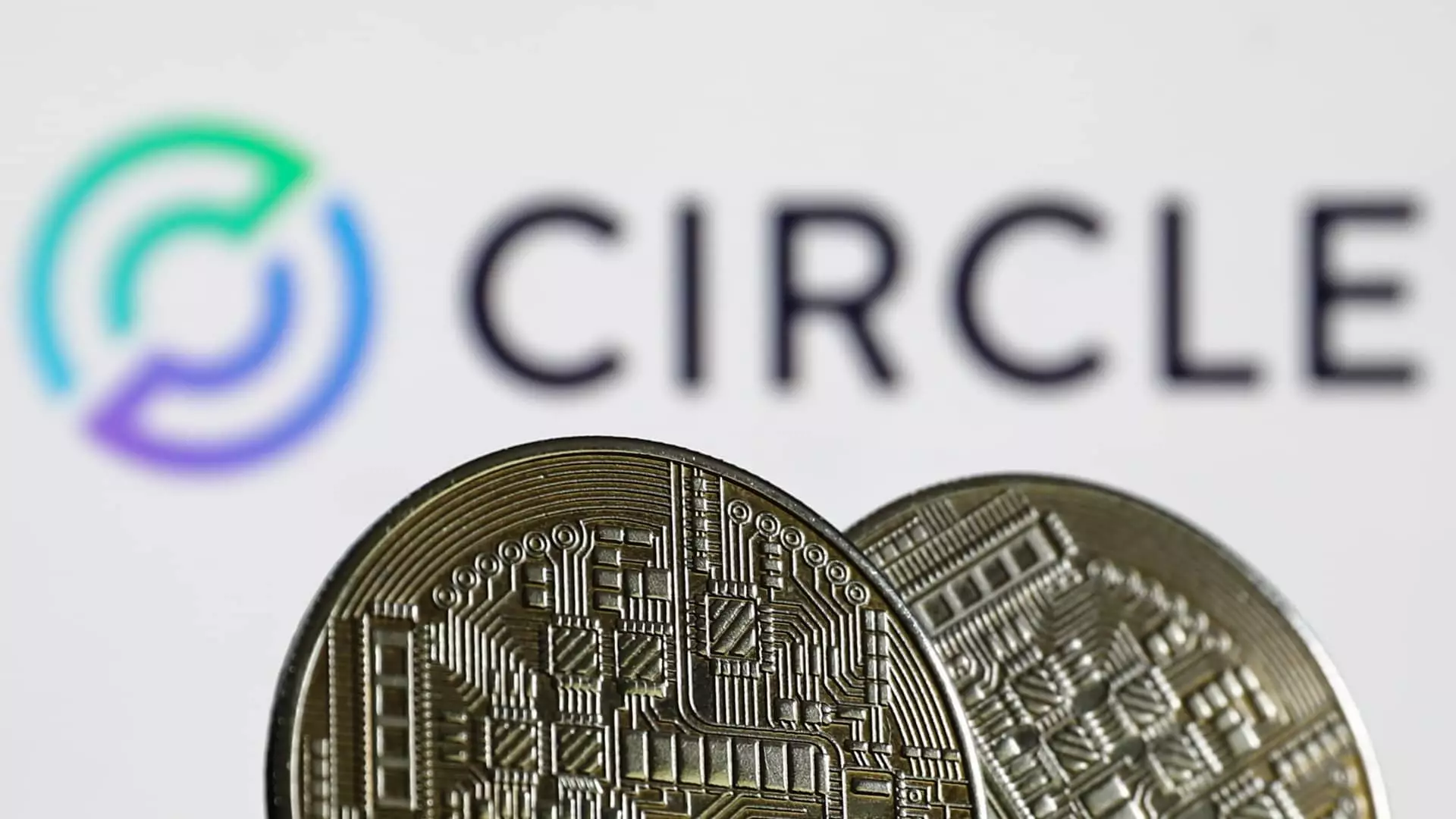In a watershed moment for both the cryptocurrency realm and the financial markets, Circle, the issuer of the USDC stablecoin, is stepping into its initial public offering (IPO) process, aiming to raise an impressive $624 million with a valuation around $6 billion. Under the leadership of CEO Jeremy Allaire, the company is not just trying to ride the wave of the crypto boom—it’s attempting to reshape it entirely. This strategic move is indicative of a deeper trend in the financial landscape: the convergence of traditional finance with the evolving blockchain ecosystem.
With Circle planning to list shares under the ticker CRCL on the New York Stock Exchange, the anticipated price range of $24 to $26 per share raises interesting questions about the valuation frenzy sweeping through the tech and finance sectors. The potential backing from industry titan Cathie Wood’s ARK Investment Management, which has expressed interest in acquiring up to $150 million of the shares, adds a potent mix of credibility and speculation to the venture.
The Challenge of Dominance in a Fragmented Market
Circle’s IPO comes at an interesting juncture in the competitive world of stablecoins, where USDC holds nearly 27% of the total market cap, far behind Tether’s daunting 67%. Although USDC has showcased a remarkable 40% growth this year, the dominance that Tether holds indicates a fierce market struggle yet to be resolved. In a sector driven by rapid innovation and shifting consumer behaviors, Circle’s ability to maintain its relevance will depend on not only its IPO success but also its adaptability to regulatory changes looming on the horizon.
Indeed, as U.S. lawmakers begin to consider comprehensive crypto legislation, the stablecoin ecosystem may soon find its foundations shaken up. The recent Senate advancement of a bill aimed at establishing a regulatory framework for stablecoins may feel daunting, yet it presents an essential opportunity for USDC and its competitors to align with authoritative standards. If done correctly, regulatory compliance could solidify USDC’s standing amid a new landscape of financial endorsement.
Circle’s Positioning and Strategic Intent
From a center-right perspective, one cannot ignore the economic ramifications of Circle’s impending IPO. While some might laud the investment opportunities it brings, skepticism remains about how such ventures might impact traditional financial structures. The notion that private companies like Circle are challenging long-established institutions should evoke caution. If Circle can demonstrate that stablecoins like USDC can migrate people and institutions away from traditional banking, one wonders if this trend will lead to beneficial innovations or unintended economic challenges.
Notably, the financial partnership Circle has nurtured with Coinbase—sharing 50% of revenue and 100% of interest generated by USDC products—positions both companies to forge ahead in their charged competition against Tether and others. Coinbase CEO Brian Armstrong’s ambitious aim of making USDC the top stablecoin not only envisions market shifts but also demonstrates a conscious effort to leverage traditional fiscal principles in a rapidly digitizing economy.
Global Influence and Broader Speculations
Moreover, the implications of USDC resonate well beyond national borders. As stablecoins like USDC increasingly become vehicles for rapid dollar transfers, they challenge existing remittance corridors and traditional international monetary systems. The potential for these digital currencies to uphold U.S. dollar supremacy while simultaneously meeting the needs of modern international finance cannot be overstated.
An interesting discourse emerges when exploring the interconnectedness of stablecoins, national economies, and global politics. Proponents argue that by facilitating dollar utility and driving demand for U.S. government debt, stablecoins help preserve the dollar’s dominance in a multipolar world. Yet, it’s equally crucial to remain vigilant about the unintended consequences, particularly around financial sovereignty and central bank policies that could emerge from the proliferation and acceptance of stablecoins.
In the economic chess game that companies like Circle and their IPOs represent, every move bears implications not only for investors but also for the broader financial ecosystem. As we stand on the precipice of regulatory clarity and market transformation, one thing is sure: Circle’s journey from a stablecoin issuer to a publicly traded entity will be an unpredictable yet illustrative case of capitalism’s relentless march forward.

